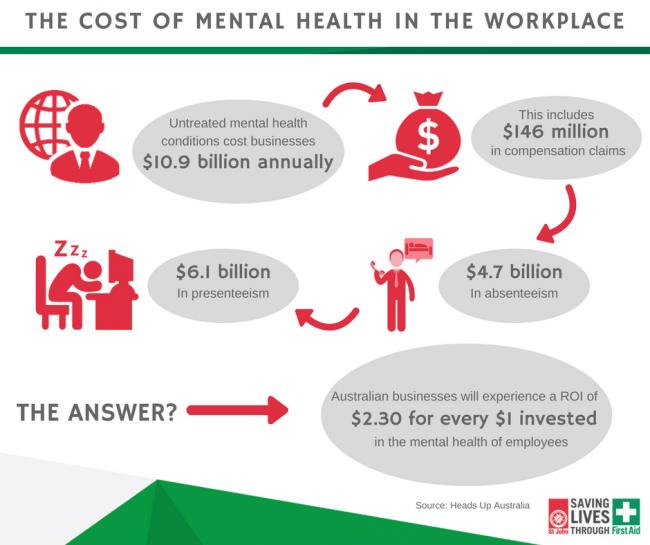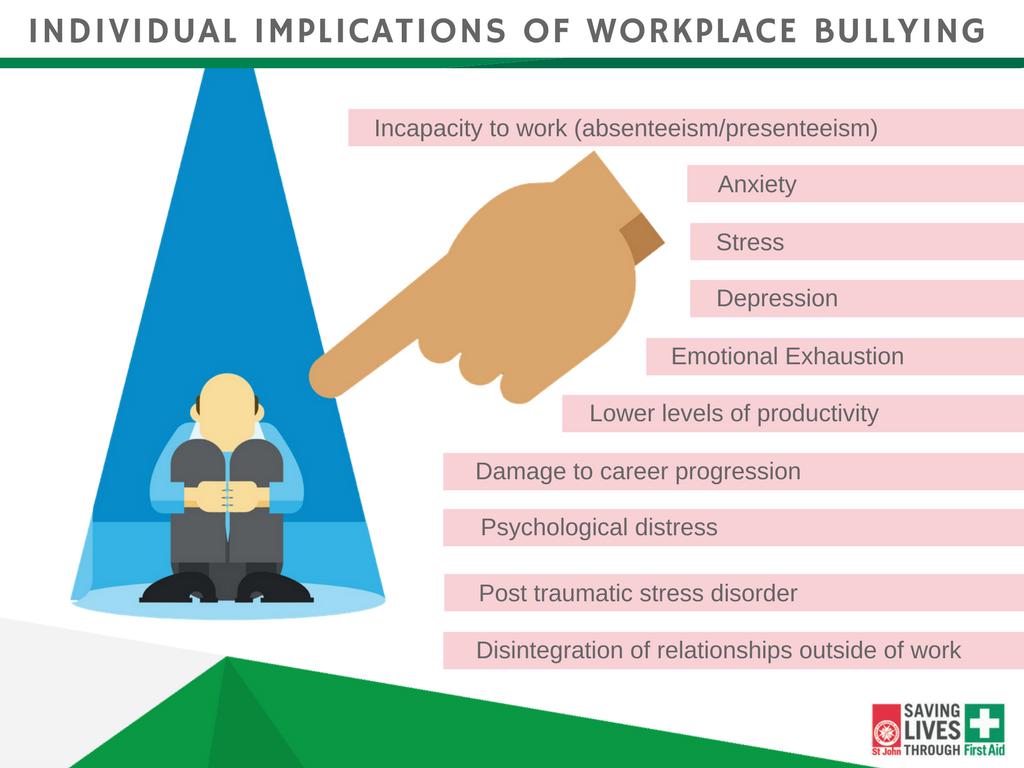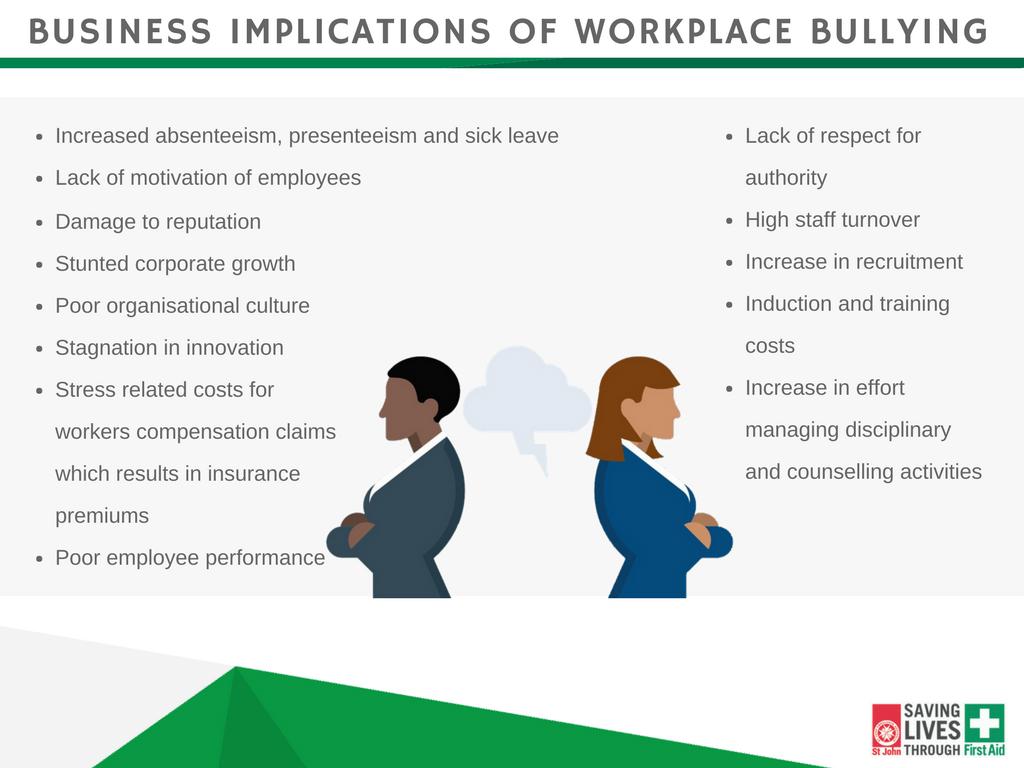The Parallels Between Workplace Bullying And Employee Mental Health

In the midst of Mental Health Month, it’s important that businesses reflect on their workplace culture and how it is contributing to the psychological status and productivity of employees.
According to Heads Up Australia, almost half of Australian employees believe their workplace is mentally unhealthy. This is an alarming revelation as psychological health is a core component of the Work Health and Safety Act and Australian businesses are obligated to provide a physically and mentally safe place for employees to work in.
Earlier this year Beyond Blue revealed that almost one in two Australians will experience workplace bullying throughout their lives. In addition to this, victims of workplace bullying are more susceptible to mental illnesses such as depression, anxiety and post-traumatic stress disorder.
Workplace bullying often goes unnoticed and unaddressed but it has severe ramifications for the target that has to endure incessant remarks, racial slurs or personal attacks on a regular basis. Understandably, people who experience workplace bullying have poor mental health and as a result, are less productive at work.
So as an employer, here’s what you can do to ensure your employees are mentally healthy and performing their best at work.
Mental Health In The Workplace
Australian employees value mental health as equal to or more important than physical health in the workplace.
It is predicted that untreated mental health conditions in the workplace cost Australian businesses approximately $10.9 billion annually. This includes $146 million in compensation claims, $6.1 billion in presenteeism (working while sick) and $4.7 billion in absenteeism.
The health status of employees, both physical and psychological, is critical to running an effective business. A recent report by PricewaterhouseCoopers revealed that Australian businesses will experience a return on investment of $2.30 for every $1 invested in the mental health of their employees.

The investment in a mentally healthy workplace not only displays the value you have for your employees but it also delivers a great financial outcome, too.
What Is Workplace Bullying?
Due to different life experiences and emotional thresholds, individuals interpret workplace bullying differently. A common factor that can cause conflict in the workplace is differing varieties of humour. Workplaces bring a range of people together so it’s important that every business sets boundaries surrounding appropriate communication so all employees know what is and isn’t acceptable in the workplace.
Examples Of Workplace Bullying:
- Abuse of power to intimidate an employee or colleague
- Discriminating against an employee because of their gender, gender identity, sexuality, race, religion, culture, education and financial status
- Offensive, belittling or humiliating public behaviour at the expense of an employee or colleague
- Cruel jokes/sarcasm, insults or mimicking of an employee or colleague
- Indirect bullying through rumours and negatively talking about people behind their back
- Ignoring and excluding an employee or colleague
- Criticism which is out of line and not part of the management performance process
- Making someone feel useless and only delegating the worst responsibilities to them
- Purposefullycausing hostile competition between employees
- Deceiving employees or omitting information
Types Of Workplace Bullying
According to Bully Zero Australia there is a range of workplace bullying tactics. Common forms of workplace bullying include:
- Pair Bullying – one person is verbally bullying another whilst others watch and listen in silence
- Gang bullying – a group of employees ganging up and victimizing the target through intimidation
- Regulation bullying – a bully forces the victim to comply with rules, regulations, procedures or laws whether or not they are appropriate or relevant
- Pressure bullying – forcing the target to meet unrealistic timelines or work with inadequate resources
- Corporate bullying – when leaders abuse the fact that the job market is grim and employees will tolerate bullying in fear of not being able to find other work
- Institutional bullying – is an accepted part of the workplace culture
Signs Someone Might Be Suffering From Workplace Bullying
Bullying in the workplace can come in many different forms and the signs of someone suffering may be difficult to pick at times. Common signs to look out for include:
- Lack of desire to be at work
- Abrupt decline in productivity at work
- Lack of friendships in the workplace (isolation)
- Avoidance of work events or activities (exclusion)
- Low self-esteem and poor self-talk
- Clear states of sadness and anxiety
- Complaints against another employee regularly
- Comments about self-harm
Implications of Workplace Bullying
Bullying in the workplace can have a severe impact on the employee, possible consequences include:

Bullying in the workplace does not just affect the person at hand; it can also have huge implications for the business where the bullying is taking place. These may include:

How To Manage The Risk Of Workplace Bullying
It’s important every workplace has a bullying action plan and that employees are aware of the policies and procedures surrounding workplace bullying. Effective examples of how to manage bullying in the workplace include:
- Implement a no toleration policy – employees must be aware that bullying in the workplace will not be overlooked and there will be consequences to their actions
- Delegate a person that is available to all staff to speak to confidentially if they are having any woes at work
- Ensure there is a claims management process which is followed
- Circulate workplace bullying policies to ensure all employees know where to go for support, assistance and how to respond to bullying incidents
- Train leaders in the workplace in how to manage employees effectively and appropriately
- Host information sessions on bullying and discrimination in the workplace for management
- Check in with employees frequently to ensure bullying is not occurring under your nose
- Ensure all employees have access to the resources they need to perform their tasks
- Monitor that leaders in the workplace are displaying good management practices through respectful and effective communication with their team/s
What To Do If You’re Experiencing Workplace Bullying
- If you feel comfortable addressing the behaviour with the perpetrator it is worth explaining why you do not appreciate their actions and asking them to stop. This provides them with the opportunity to realise they are out of line and to correct their actions
- Discuss your experience/s with another person to gain insight into what is the appropriate next step. This may be a colleague, manager or HR team member
- Check your workplace bullying policy and reporting procedure and follow their guidelines
If workplace bullying is not addressed in the early stages it can have huge implications on the victim. Constant exposure to torment, isolation and undue stress can understandably cause great strain on a person’s emotional and psychological wellbeing.
Workplace bullying can be the beginning of the decline of a person’s mental health or the final ‘straw that broke the camel’s back’ so its important employers know the warning signs to look out for. If you think an employee or colleague may be on the brink of a mental health crisis follow our guide on how to assess and respond accordingly.
Workplace bullying is not something that should be overlooked. The happiness and emotional tact of your employees is critical to a flourishing work environment. Investing in your business by investing in your employees can be the greatest business decision employers ever make.

